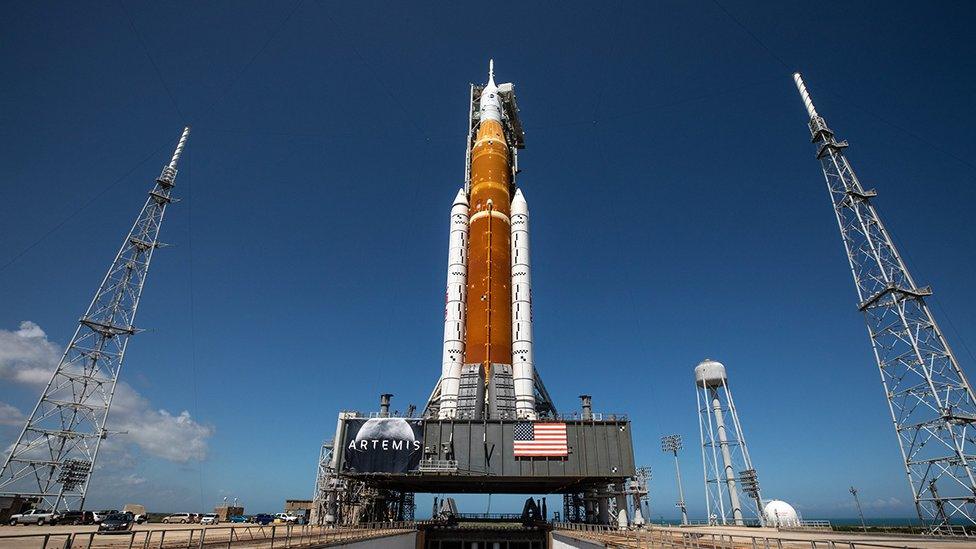Artemis rocket heads to launch pad
- Published
- comments

The Space Launch System is Nasa' most powerful rocket
Nasa's new Moon rocket is being moved to a launch pad to prepare for its first flight.
Known as the Space Launch System (SLS), it's the American space agency's most powerful rocket.
After successfully completing a series of tests by engineers, the giant rocket is being rolled out ahead of its planned launch day on 29 August.
The massive 100m-tall (328ft) rocket is now making it's way towards Pad 39B at the Kennedy Space Center in Florida on a Nasa crawler, a huge tractor-like vehicle that moves very, VERY, slowly.
It is expected to take around 10 hours to make the 4.2 mile journey to the launch pad.
When will astronauts return to the Moon?
Artwork: The conical Orion crew capsule which separates from the rocket
The SLS is part of Nasa's Artemis programme that aims to return astronauts to the Moon's surface for the first time in over 50 years.
The rocket's first launch, which is scheduled for 29 August, will be a test flight with no crew on board.
The crew capsule called Orion will be sent around the back of the Moon before returning.
The mission, called Artemis 1, is to check the heatshield on the capsule can survive the heat of re-entry into Earth's atmosphere.
The extra power of SLS, which has 15% more thrust than the Saturn V rocket, is designed to be able to send enough cargo to the Moon that astronauts will be able to stay there for longer periods.
"To all of us that gaze up at the Moon, dreaming of the day humankind returns to the lunar surface - folks, we're here! We are going back. And that journey, our journey, begins with Artemis 1," said Nasa Administrator Bill Nelson.
"The first crewed launch, Artemis 2, is two years from now in 2024. We're hoping that the first landing, Artemis 3, will be in 2025," he told Â鶹ԼÅÄ News.
Artwork: Nasa wants to return to the Moon, but this time it wants to stay
Nasa has said that in this third mission it will land the first woman on the Moon.
The programme will also see the first person of colour land on the Moon, though this may be a later mission.
The last time a person landed on the Moon was in 1972.
- Published28 April 2022
- Published3 September 2020
- Published20 February 2020
